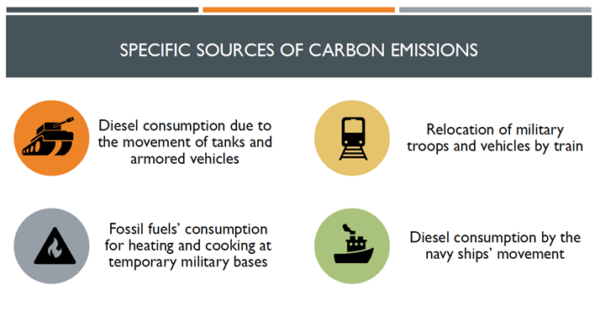GHG emissions caused by Russian invasion of Ukraine
The report on interim assessment of climate damage caused by Russia’s war in Ukraine has been presented at COP27.
Months of the military conflict caused by Russia’s full-scale invasion of Ukraine have caused significant damage and led to the unfolding of a humanitarian crisis. Civilian infrastructure has been destroyed and damage has been done to the environment. This war adversely affects the global climate causing significant carbon dioxide and other greenhouse gas emissions into the atmosphere.
This interim assessment, which is focused on four activity areas directly affected by the war, concludes that greenhouse gas emissions for seven months of the full-scale war totals at least 100 million tCO2e. This is the equivalent of the total GHG emissions over the same period in a country like The Netherlands. As a number of impacts of this war have not yet been taken into consideration, there figures are likely to underestimate the true level of emissions. The longer Russia’s war continues, the higher final figures will be.
The post-war reconstruction of civilian infrastructure accounts for half of the GHG emissions, followed by fires. Emissions from warfare account for a smaller share although limited information was available to make a comprehensive analysis. Transport emissions from refugees and IDPs are relatively low.
The report has benefitted from the initial estimations of GHGs emissions from military preparations across borders of Ukraine that was published in February, 2022.
Please, download the presentation below:



